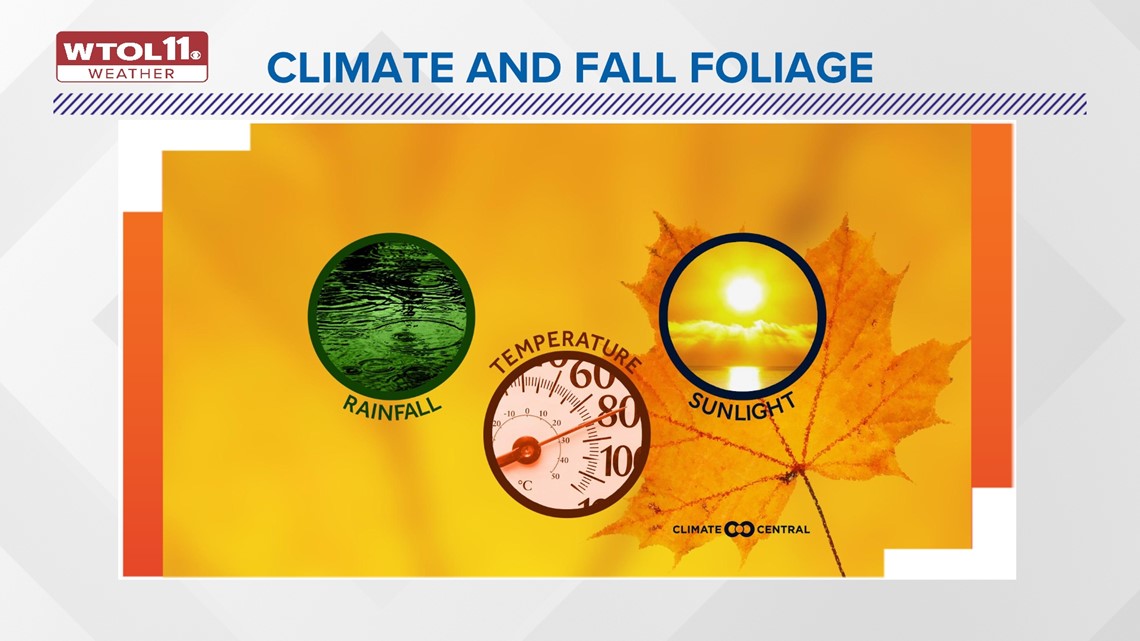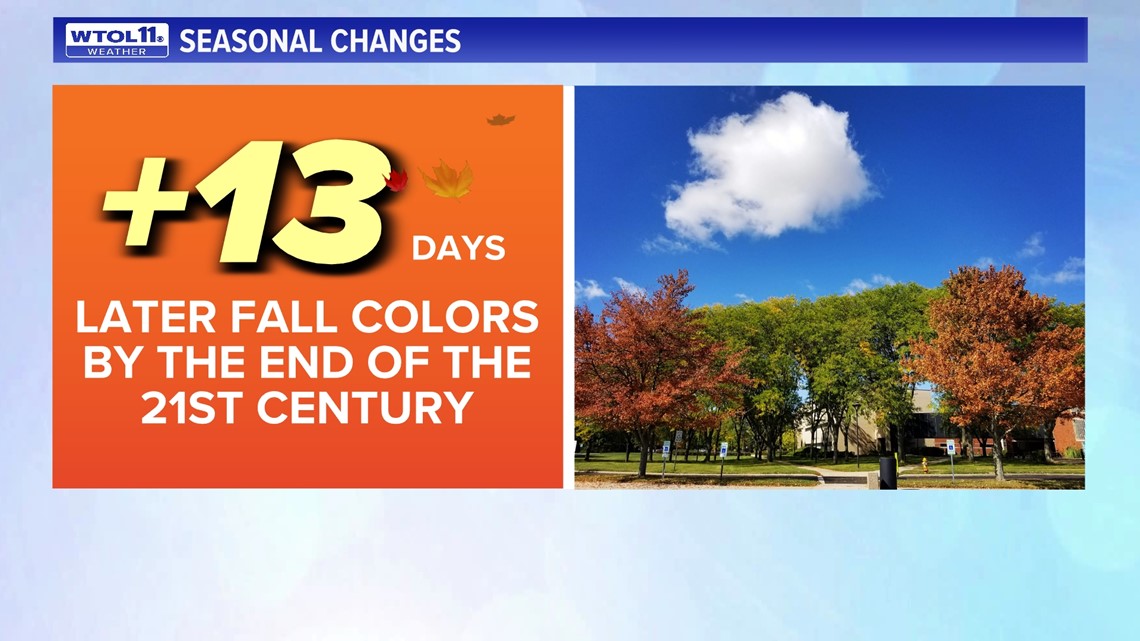TOLEDO, Ohio — With September already halfway through, you may be noticing some signs of fall. From cooler temperatures and lower humidity to fall sports and colorful leaves, these changes cue the start of autumn. The fall season officially begins Saturday, Sept. 23, the same day as the autumnal equinox when day and night are equal in length. With autumn just a little over a week away, it's time to talk fall colors.
Though a handful of trees across northwest Ohio and southeast Michigan have started transitioning from green to yellows and reds, most areas remain in summer mode. Fall foliage typically starts changing color during September, but doesn't peak in vibrancy until mid-October. This year, Oct. 10-20 will likely feature the peak of fall color across the lower Great Lakes. Just a month away, this peak of fall foliage will bring brilliant colors and many tourists to the region for leaf peeping.


How does the weather impact fall colors? Sunlight, temperature and rainfall are the primary meteorological variables that affect fall foliage. Temperatures arguably play the biggest role in triggering the transition in the fall landscape, and cooler nights cue chemical changes in plants. During the summertime, trees abundantly produce chlorophyll, the pigment responsible for the green color in leaves. Trees also produce a number of other colorful pigments during the summer, but these are masked by chlorophyll.


The cooler nights of autumn trigger the cessation of chlorophyll production, thus allowing the other colorful pigments to shine through. While cool nights in the 40s are ideal for the fall color change, frosty and freezing conditions can kill leaves and bring an early end to fall color. An early hard freeze can cause leaves to wither and fall off before changing color. The WTOL 11 weather forecast calls for many crisp nights in the 40s and 50s to initiate the fall color change.
Additionally, sunlight and precipitation impact fall foliage. Bright September sunshine enhances fall colors by amplifying the production of sugars in trees during the days. These sugars trigger the production of the anthocyanin pigment responsible for the vibrant purple, red and crimson colors that are so prized by fall fanatics.
The cooler nights trap sugars in the leaves as the veins gradually close off at night, enhancing the production of anthocyanin. So mild, sunny days coupled with cool, crisp nights provides the perfect recipe for vibrant colors. Lastly, precipitation impacts fall foliage and heavy rain can knock leaves off trees before reaching peak color. While some rainfall is necessary, extreme drought and flooding rain put stress on trees, and can inhibit ideal fall colors.


How is climate change impacting autumn foliage? Increases in fall temperatures have played the biggest role in altering the natural patterns of fall colors. Nationwide, fall temperatures have increased drastically over the last half-century. Since 1970, temperatures have increased by 2.7 degrees on average. Toledo has seen an even greater rise in fall temperatures than the national average. Temperatures in Toledo have risen by a whopping 3.9 degrees in September since 1970.
Warmer fall weather has delayed the onset of fall color, essentially tricking trees into thinking it's still summer, postponing the end of chlorophyll producing. Warmer fall weather alters the natural chemical changes that occur during the autumn season. As fall temperatures continue to warm, autumn colors will peak later and later.
Climate models, which employ similar computer algorithms to the models that help the WTOL 11 Weather Team predict the future forecasts, estimate that by the end of the 21st century, the fall color change will occur 13 days later than it does currently. Given that our current peak of fall foliage happens in mid-October, climate change could shift this until closer to November.


RELATED: Earth is outside its 'safe operating space for humanity' on most key measurements, study says
Though climate change is turning back the clocks on the fall color change, this year's weather forecast is conducive to a beautiful autumn with vibrant colors. You'll see plenty of sunny and mild days and cool and crisp nights in the WTOL 11 10-day forecast. Stay tuned to the Climate Friday Newsletter for updates on the fall color change.
MORE FROM CLIMATE FRIDAY

